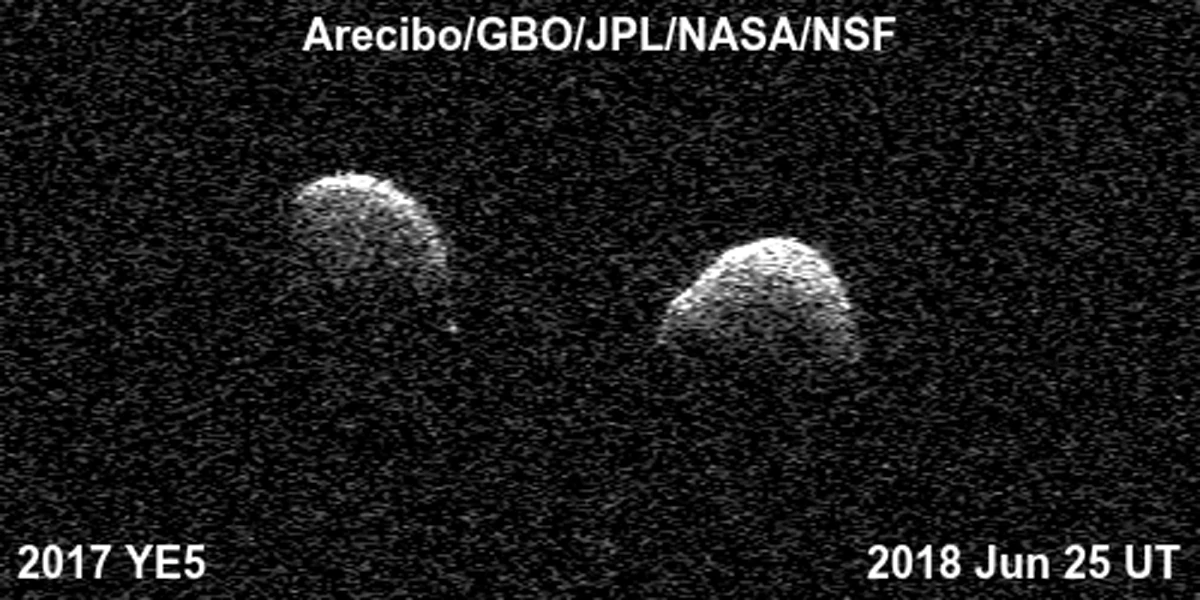UPI
Brooks Hays
The near-Earth asteroid 2017 YE5 is actually two asteroids. Observations by two powerful telescopes helped astronomers confirm the asteroid’s binary nature.
The asteroid was first spotted by the Morocco Oukaimeden Sky Survey in December of 2017. Followup observations during the summer of 2018 by NASA’s Goldstone Solar System Radar suggested the space rock might actually be two objects.
Though scientists could make out two distinct lobes, they couldn’t determine whether the two bodies were adjoined or separated.
Last month, the asteroid made its closest approach to Earth for at least the next 170 years, passing within 3.7 million miles of Earth. Astronomers at the Arecibo Observatory in Puerto Rico and West Virginia’s Green Bank Observatory teamed up to photograph the approaching object.
The telescopes used a bi-static radar configuration to image the asteroid. Arecibo bounced its radar signal off the object and Green Bank recorded the return signal. The effort confirmed the two lobes are separated and orbiting around one another. Each rock measures roughly 3,000 feet across.







